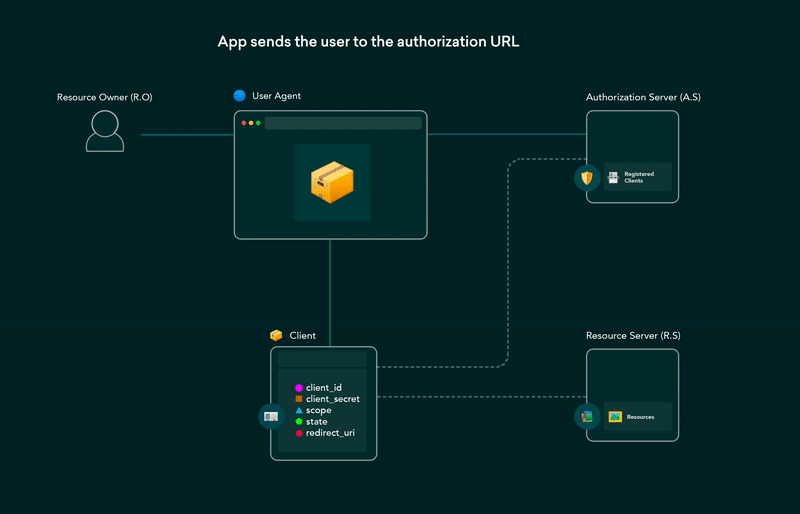
| Term | Description |
|---|---|
| Client 📦 | The application that seeks access to resources. Usually, the third party. |
| Resource Owner 👤 | The user who owns the resources. It can also be a machine 🤖 (E.g., Enterprise scenarios). |
| Resource 🖼 | Could be images, data exposed via APIs, and so on. |
| Resource Server 📚 | Server that hosts protected resources. Usually, an API server that serves resources if a proper token is furnished. |
| Authorization Server 🛡 | Server responsible for authorizing the client and issuing access tokens. |
| User-Agent 🌐 | The browser or mobile application through which the resource owner communicates with our authorization server. |
| Access Token 🔑 | A token which is issued as a result of successful authorization. An access token can be obtained for a set of permissions (scopes) and has a pre-determined lifetime after which it expires. |
| Refresh Token 🔄 | A special type of token that can be used to replenish the access token. |
An end-user (resource owner 👤) grants a printing service (app 📦) access to their photo (resource 🖼) hosted in a photo-sharing service (resource server 📚), without sharing their username and password. Instead, they authenticate directly with a server trusted by the photo-sharing service (authorization server 🛡), which issues the printing service delegation-specific credentials (access token 🔑).

client_secret.access_token 🔑 exchange step happens confidentially via back-channel (server-to-server communication).